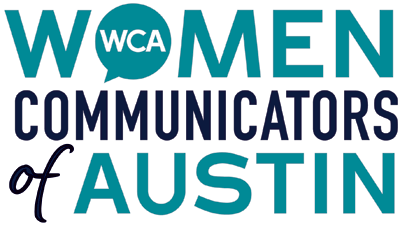
As you may already know, Freelance Austin released the results of a survey capturing some details on what freelancers in the Austin area typically charge. We’re not the only ones interested in capturing this information. As freelancing continues to gain popularity as a professional choice, a number of organizations and businesses have looked to answer the same question: just what do freelancers charge?
Why the Results Matter
This is one of the biggest questions new freelancers (and even some hardened veterans) face. What’s a fair rate?
Professionals just starting out in freelancing have a tendency to undercharge. They don’t realize all the expenses and costs freelancers take on in comparison to employees doing similar work, not to mention how much they save businesses by taking on those expenses.
That’s bad for the freelancer who undercharges, for obvious reasons, but it also does a disservice to other professional freelancers. If you convince clients that quality freelance services are worth less, they’ll balk at the reasonable rates others charge.
That’s why these surveys can play a valuable role – if you know how much comparable professionals can command from good clients, you can check how your rates compare and see if it’s time to hike them up.
Keep in Mind: The Numbers Don’t Tell the Whole Story
Statistics are famously prone to being manipulated and misunderstood, and many of the resources here don’t provide as much context as is really needed to get the full story behind the numbers. Rates should be different for a 3000-word article that requires seeking out sources and doing extensive research versus a 500-word blog post that’s comparatively simple to research. Same thing goes for a logo design versus a website re-design.
Without knowing the details of every project, you have to take the numbers with a grain of salt and try to extrapolate the information you need from what you know. The more information you have, the more informed a decision you can make in your own pricing.
Freelance Rates: Resource Comparison
Contently’s Rates Database
First off, we have the rates database hosted by Contently that freelancers can submit information to based on their past experiences with clients. That means that freelancers can see a specific number tied to each client, which is a big plus if you’re scoping out working with any of these clients in advance, or if you just want to get a sense of the types of earning opportunities out there.
Like many of the resources we looked at, Contently’s database is very limited in scope though. It’s predominantly focused on journalism and doesn’t include much information on other types of freelancing, such as marketing or consulting. And because it’s basically one long list of specific rates freelancers have earned, parsing out the average or median rates for comparable types of projects would be a lot of work.
Nonetheless, here’s some of what we found that may be useful to you.
Range of Writing Rates: $3-$1,500 per piece; $0.02-$2 per word
As you’ll notice, that range is HUGE. It’s worth noting that the lower end of that range occurred more rarely than the higher end and most rates fell somewhere in the middle. The per piece amounts that come up the most often in the list are in the $100-$300 range and $1 per word is pretty typical for publications that price that way.
The $1,500 pieces were specifically noted as being for longform. What that means can vary based on the client, but you can count on a word count into the thousands if you take on a project at that rate.
You’ll also see from their database some of the varied ways publications pay their freelancers – by the word versus by the piece, a flat rate versus pay determined by number of pageviews, and different rates for digital and print. Freelancers can benefit from having an idea of what they’d want to charge for each of the different methods.
Their database also includes some information on photography and design rates, but not enough to draw many conclusions from.
Payoneer Freelance Income Survey
Payoneer’s income survey is global, so it tackles the information on the largest scale of any resource we came across. On the plus side, that means you get a broader view of what’s “normal” on the international scale. On the negative, it means the averages are brought down by the number of freelancers working for content mills or in countries where the exchange rate brings the amount they earn in US dollars down to almost nothing. In fact, only 14% of the freelancers surveyed were located in North America, half of them were from Latin America and Asia.
According to their survey, the average rate freelancers make is $21. But they also found that half of the people they surveyed found most their work from online marketplaces – websites like Elance and fiverr, where competing on price is the norm. Many freelancers that break away from those marketplaces and start finding clients on their own via sources like marketing and referrals can (and should) charge much higher rates than Payoneer’s average.
Freelance Union Survey
The Freelance Union survey isn’t as focused on actual dollar amounts as it is on getting a feel for the larger freelance landscape. While it doesn’t provide any information on average freelance rates, it does capture a sense of how freelancers are feeling about their earnings:
- 48% say they expect to earn more next year
- 60% say they earn more now than they did in employee positions
- 50% say they’d stick with freelancing even if they were offered a full-time job
That bodes well for days to come. If anything, freelance rates seem to be on the upswing and those just starting out can likely expect to be making more as the market grows and their own skills deepen.
The Freelance Austin Survey
Finally, we come to our own survey. With 266 respondents, the sample size isn’t huge, but it provides enough information to draw some clear conclusions. Even though the survey respondents were primarily members of Freelance Austin, the results don’t only speak to what it’s possible to charge within Austin, TX as a freelancer. More than half of the clients Freelance Austin’s members work with are located out of state.
47% of those surveyed make $60,000 or more per year on freelance projects, and 24% make more than $100,000. Less than 15% of Austin freelancers charge in the $20-$39 range, where Payoneer’s average rate falls, and less than 1% charge less than that. Most of those that charge an hourly rate fall somewhere in the $40-$79 per hour range, although a healthy number go above that, all the way up to $150 an hour.
In contrast to the respondents on the Payoneer survey, the most common method of finding work for Austin’s freelancers is referrals. Over 90% said referrals were their number one source of income, compared to only 4% that used job boards. While correlation doesn’t always equal causation, it seems a fairly solid bet that getting out and networking will yield higher paying work than sticking with the online marketplaces.
Conclusion
While the information in the different resources doesn’t always match up – there’s a bit of apples-to-oranges comparison required – a look at the different surveys and findings out there can provide some takeaways for freelancers trying to figure out the right rate for their services:
- Freelancing pays – Working for yourself doesn’t have to mean a dip in income.
- It pays to be picky – Low paying work is out there, but so is high paying work.
- Referrals pay – Who you know matters as much as what you know. If you haven’t made networking a part of your freelance business, start now. If you’re in Austin, heading to a Freelance Austin event can be a good start.
- Geography only matters up to a point – US rates don’t have to be tied to local geography, but global rates drive averages down and freelancers in the US can (and should) insist on rates that provide a living wage here.
- There’s a huge amount of variety – But you know the higher end is out there – those clients exist! Why settle for $20/hour when other freelancers are making $40-$150
Don’t undersell yourself. Take account of what your expenses will be, how much you need to make, how much you’d ideally like to make, and the level of experience and skill you bring to the table. Don’t be afraid to ask for what you’re worth. Now you have the numbers to back it up.
- 5 Good Reasons to End a Client Relationship (And How to Do It) - January 11, 2019
- Finding an Effective Freelance Routine with Ashley Abedini - December 14, 2018
- Freelancing for Work Life Balance with Kristen Dunn - October 12, 2018
